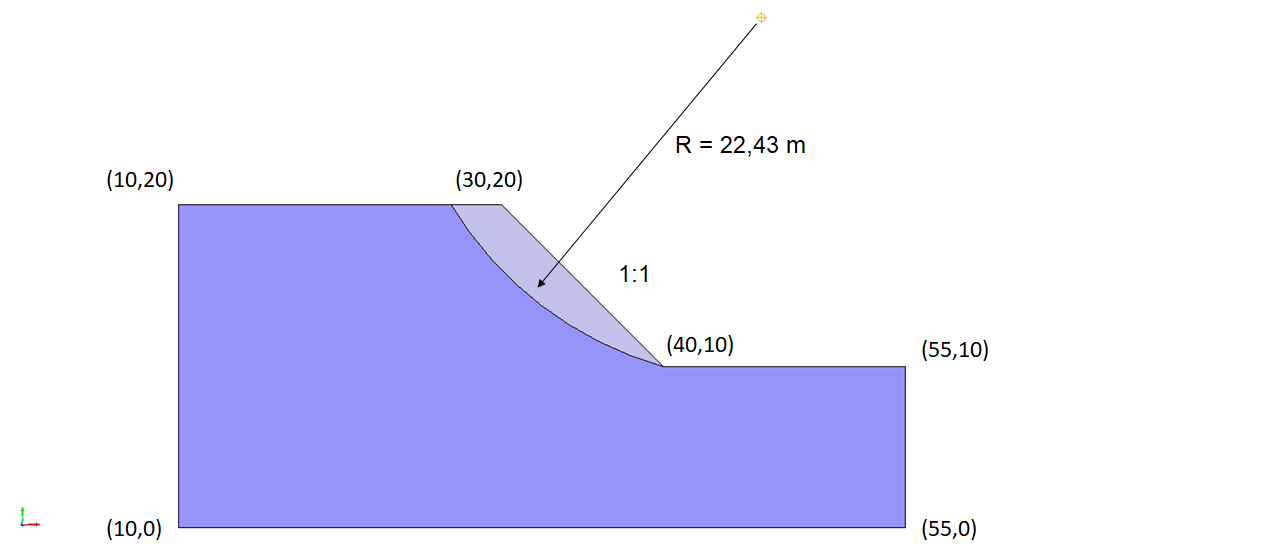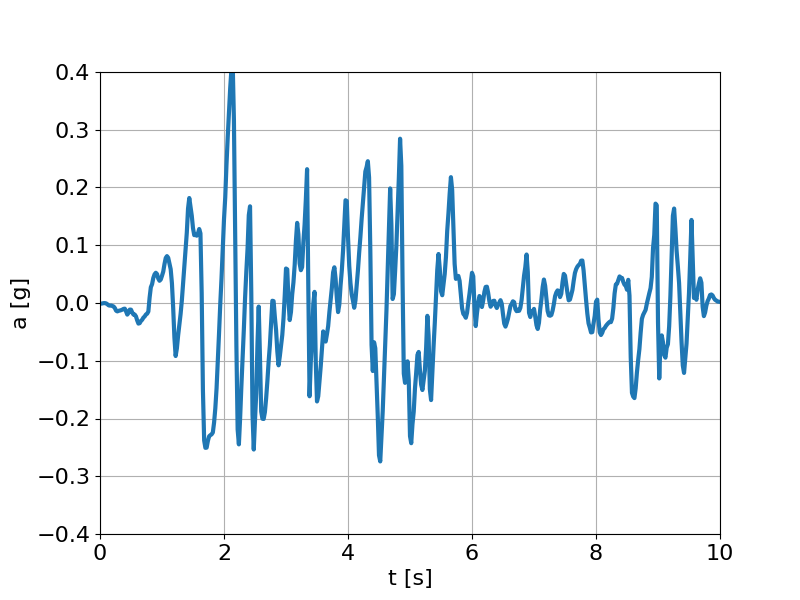1. Reference problem#
1.1. The aim is to determine the seismic response of a homogeneous embankment and to calculate the evolution of the safety factor during the earthquake along a pre-determined sliding line.#
1.2. To do this, the modeling is divided into three parts:#
Static calculation by own weight to determine the initial static stresses,
Dynamic earthquake calculation to determine the evolution over time of mechanical stresses in the embankment,
Call to macro-command POST_NEWMARK to determine the evolution of the average acceleration, the irreversible movements and the evolution of the safety factor during the earthquake.
1.3. Geometry#
We consider a homogeneous embankment with a height of 10 m and a slope of 1:1 (45°). A sliding circle joining the top and bottom of the embankment is considered, with a radius of 22.43 m and a center (46.11, 31.58).

Figure 1- Configuration of the embankment and positioning of the sliding circle.
1.4. Material properties#
1.4.1. Elastic properties of the material#
The mechanical characteristics of the backfill material are summarized in the table below:
\(G(\mathit{MPa})\) |
|
|
|
cohesion \(c(\mathit{kPa})\) |
||
SLOPE |
20 |
0.334 |
0.334 |
1835 |
28 |
8 |
The documentation of the reference case with the GeoSlope software indicates that 10% depreciation was taken into account, without specifying how it is integrated into the modeling. For this test case, no material damping source is considered, only damping from boundary conditions (§1.3) is taken into account in the model.
1.5. Boundary conditions and mechanical loads#
1.5.1. Boundary condition#
Static calculation:
Base: zero displacement in the vertical direction (DY)
Right and left edges: zero displacement in the horizontal direction (DX)
Dynamic calculation:
Base, right and left edges addition of paraxial elements (D_ PLAN_ABSO)
1.5.2. Loading#
Static calculation:
Loading type PESANTEURappliqué to the model.
Dynamic calculation:
Base: loading type ONDE_PLANE of an S wave.
Right and left edges: loading type ONDE_PLANE of an S wave with the option of adding the reflected wave (COOR_REFLECHI)
The temporal seismic signal is as follows:

Figure 1- Time signal at the input of the dynamic calculation.
1.6. Initial conditions#
The displacement is zero within the set of the model at the initial instant.